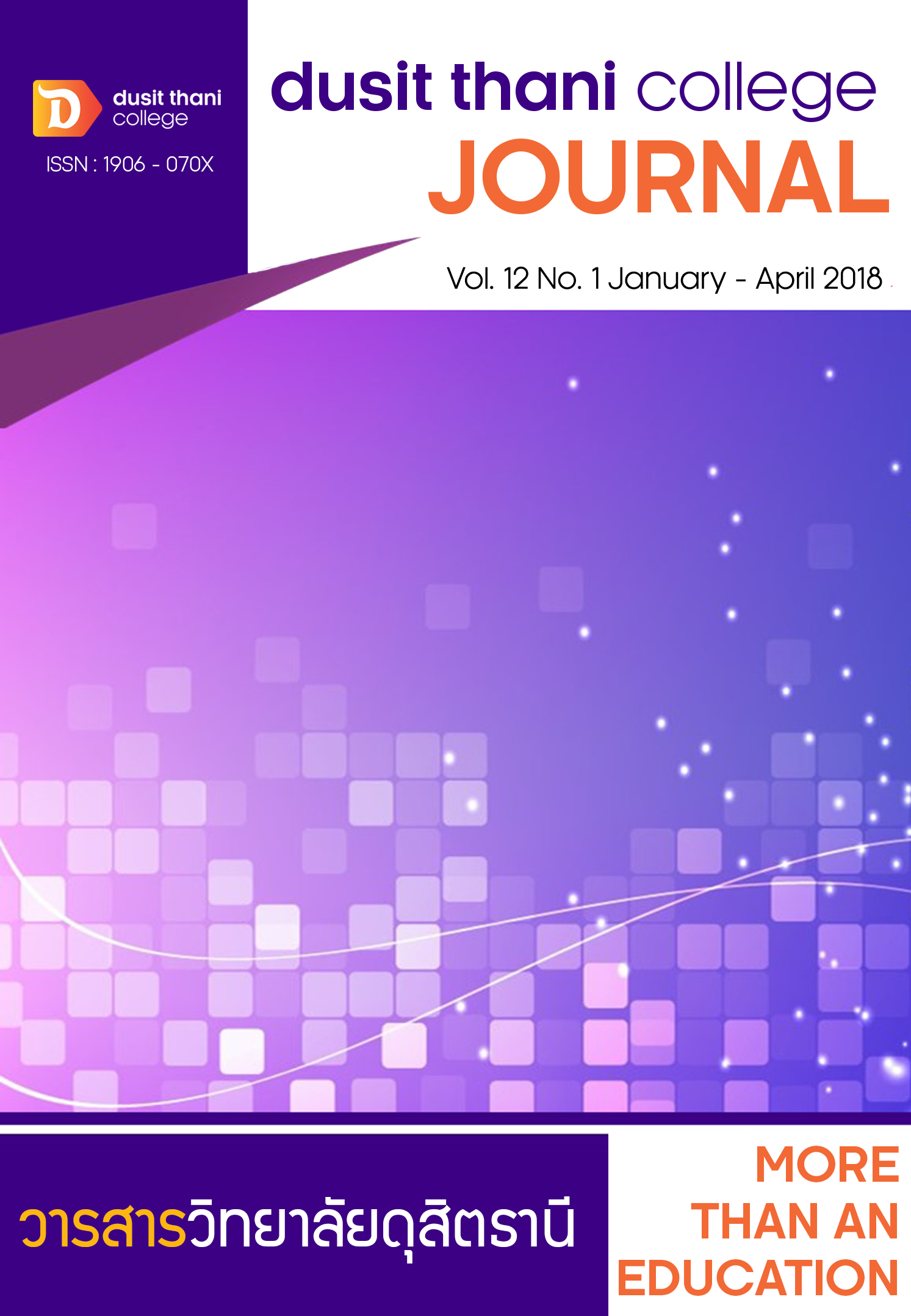The Development of Indigenous Woven Thai-Krang Products in Central Thailand for the Creative Economy
Main Article Content
Abstract
Indigenous woven Thai-Krang products of Central Thailand (clothes, decorations and wares) are a heritage and social capital that can be used to generate community income for the creative economy. This research aimed to develop a model for Thai-Krang products in central Thailand for the creative economy. A qualitative research method was used to study in selected communities of Supanburi, Chainat and Uthai Thani Provinces. Data were collected by interview, observation, focus group discussion and workshop. The research results revealed that (1) the Thai Krang ethnic group emigrated from Pookhrang Town, an old town on the West side of the Mekhong River, and first settled down in Nakorn Chaisi and Supanburi in the reign of King Taksin. They carried out and inherited their cultural traditions, especially woven cloth production. All cloth was woven from local cotton and silk, using natural dyes from plants. (2) Thai Krang woven cloth products have been continuously transmitted from generation to generation in the family unit and are produced in modern society by community enterprises. There are problems with insufficient budget, unskilled workers, weak production quality control, lack of designers, creativity and marketing. (3) The suggestions for application of traditional knowledge are increased creativity to add cultural and economic value to products, organization of conservation projects and greater consideration of consumer needs. Fifteen products were selected by users and stakeholders as prototypes to be incorporated in the creative economy.
Article Details
Article Screening Policy
- All research and academic articles to be published must be considered and screened by three peer reviews in the relevant field / article.
- All articles, texts, illustrations and tables published in the journal are the personal opinions of the authors. Editors don't always have to agree. And no responsibility whatsoever is the sole responsibility of the author.
- The articles to be published must never be published. Where did you first publish? And not in the consideration of other journals If the audit found that there has been a duplicate publication It is the sole responsibility of the author.
- Any article that the reader sees as being plagiarized or impersonated without reference. Or mislead the work of the author Please let the journal editor know it will be your greatest blessing.
References
Culture Surveillance Bureau. (2013). Website. Available at: https://www.m-culture.go.th/surveillance/main.php?filename=index (Accessed 10 February 2016).
Howkins, J. (2001). The creative economy: How people make money from ideas. London: Penguin.
Kaewpradit, K., Keeratiburana, Y. and Janta-po, A. (2013). "Krajood: Creative Economics Development in Communities through Indigenous Handicraft of Southern Thailand." International Journal of Academic Research in Business and Social Sciences, 3(9): 707.
Lisuwan, W. (1989). Academic Arts. Bangkok: Peerasri Anusorn Fund
Patimapronthep, K. (2005). Research and development to solve community problems by using local traditional knowledge: A case study of Mai Reang Community, Chawang District, Nakhon Sri Thammarat Province. Bangkok: Princess Maha Chakri Sirindhorn Anthropology Centre.
Phatluang, K. (2010). Industry in the creative economy: A comparative case-study of Thai cultural heritage industries. Bangkok: University of the Thai Chamber of Commerce.
Piyapan, B. (1998). Laos in the Rattanakosin Era. Bangkok: Thammasart University.
Pongnil, M. (2005). The cultural dynamism of historical development around Pa Yao. Bangkok: The Thai Research Fund.
Rasmeepaiboon, N. et al., (2005). Research project into the quality control development of pa jok of the Lao Krang, Ban Tung, Supanburi. Bangkok: Suan Dusit University.
Parsons, T. (1975). Social systems and the evolution of action theory. New York: The Free Press.
Schliesinger, J. (2015). Tai groups of Thailand, Volume 2: Profile of the existing groups. London: White Lotus.
The Office of the National Economics and Social Development Board. (2011). National economic and social development plan, vol. 7 (2535-2539) (1992-1996). Bangkok: National Economic and Social Development Board.
UNCTAD. (2008). Creative Economy Report 2008. United Nations Commission on Trade and Development, Washington.

